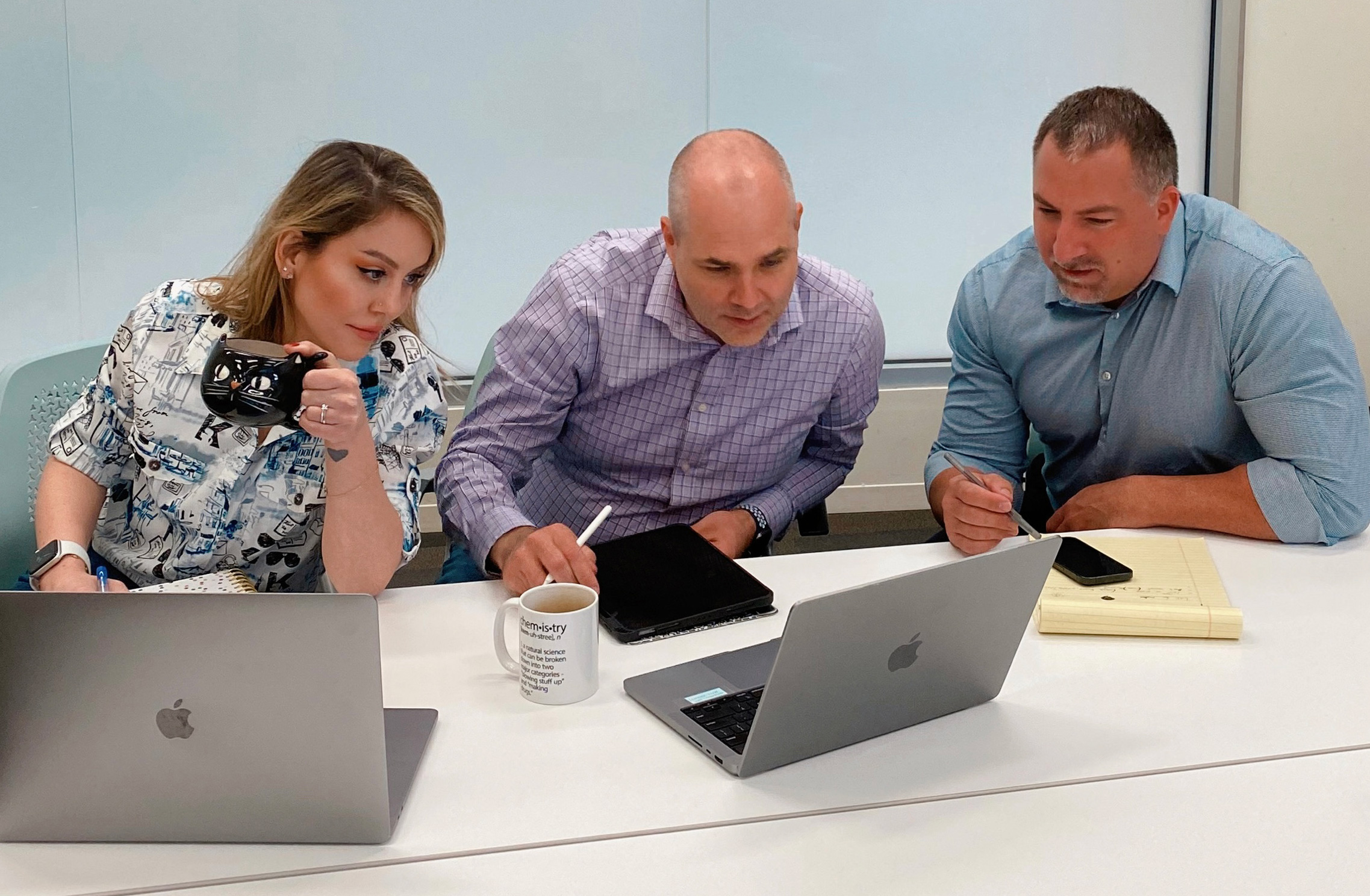
Abundant but chemically complex, lignin has long been one of the biggest challenges in the quest to produce economically viable plant-based fuels.
Now an enterprising group of scientists with the Great Lakes Bioenergy Research Center is working to turn this trash into treasure.
Steve Karlen, Canan Sener, and Jason Coplien have been awarded the first GLBRC Industry and Entrepreneurship Award, established to recognize members who have demonstrated entrepreneurial excellence or fostered collaboration with industry partners to support the center’s mission.
Through a startup company called Phenolvation, the trio of scientists are working to commercialize technology developed through GLBRC research that can produce sustainably sourced replacements for common petroleum products.
These chemicals include acetaminophen, the active ingredient in Tylenol, and para-aminophenol, a precursor molecule used to make ink, dyes, adhesives, and other polymers with a global market value of more than $1.5 billion.
“They have demonstrated exceptional leadership in advancing the commercialization of biomass-derived pharmaceuticals,” said Troy Runge, a GLBRC co-investigator and associate dean of research for the College of Agricultural and Life Sciences at UW–Madison.
The venture started with a thought experiment, Karlen said.
As an undergraduate, he had tried to make buckyballs, soccer ball shaped molecules of carbon. He was discussing the chemistry with former GLBRC postdoc Justin Mobley over a couple of beers when they considered what would happen if they did the same rearrangement on a lignotoxin from poplar, a fast-growing tree considered a promising source of biofuel.
Mobley realized it would be para-aminophenol, a precursor to acetaminophen, a widely used painkiller traditionally made from derivatives of coal tar or petroleum.
In 2019, Karlen, Mobley, and former GLBRC co-investigator John Ralph patented the process for making p-aminophenol. But the process wasn’t efficient enough to be commercially viable.
“We thought we had really great yields — until we went to actually physically put it in a bottle,” Karlen said.
Two additional innovations turned that around.
First, Vitaliy Tymokhin, a research scientist in Karlen’s lab, discovered that using a different process to break down the wood increased the yield of p-aminophenol.
The other problem is p-aminophenol is very unstable. Left on its own under the treatment conditions, it will react and form undesireable side-products. So Sener, an expert on catalysis and process engineering, developed a flow reactor process so the chemical can be separated before it has time to degrade.
Through the Wisconsin Alumni Research Foundation, the team has applied for patents on the new processes, which together result in yields greater than 90%.
Last fall, Karlen, Sener, and Coplien, a research program manager with experience in manufacturing and a masters degree in business administration, formed Phenolvation.
Through UW–Madison’s Discovery-to-Product (D2P) commercialization program, the team has worked to develop potential partnerships that they hope will move the technology from the lab bench to 1 ton per day production by 2026.
They are also part of the 2025 Wisconsin Governor’s Business Plan Contest, a five-month process that links budding entrepreneurs with community resources, mentors, and sources of capital.
“I hope it’s encouraging to other people within the center,” Coplien said.
Sener said the startup wouldn’t be possible without the contributions from Mobley, Ralph, Tymokhin as well as the support from GLBRC leadership.
GLBRC Director Tim Donohue said the technology behind Phenolvation “is yet another example of how federal science investment can enable future biotechnology innovation in ways that were not imagined when the Bioenergy Research Center program was initiated in 2007.”